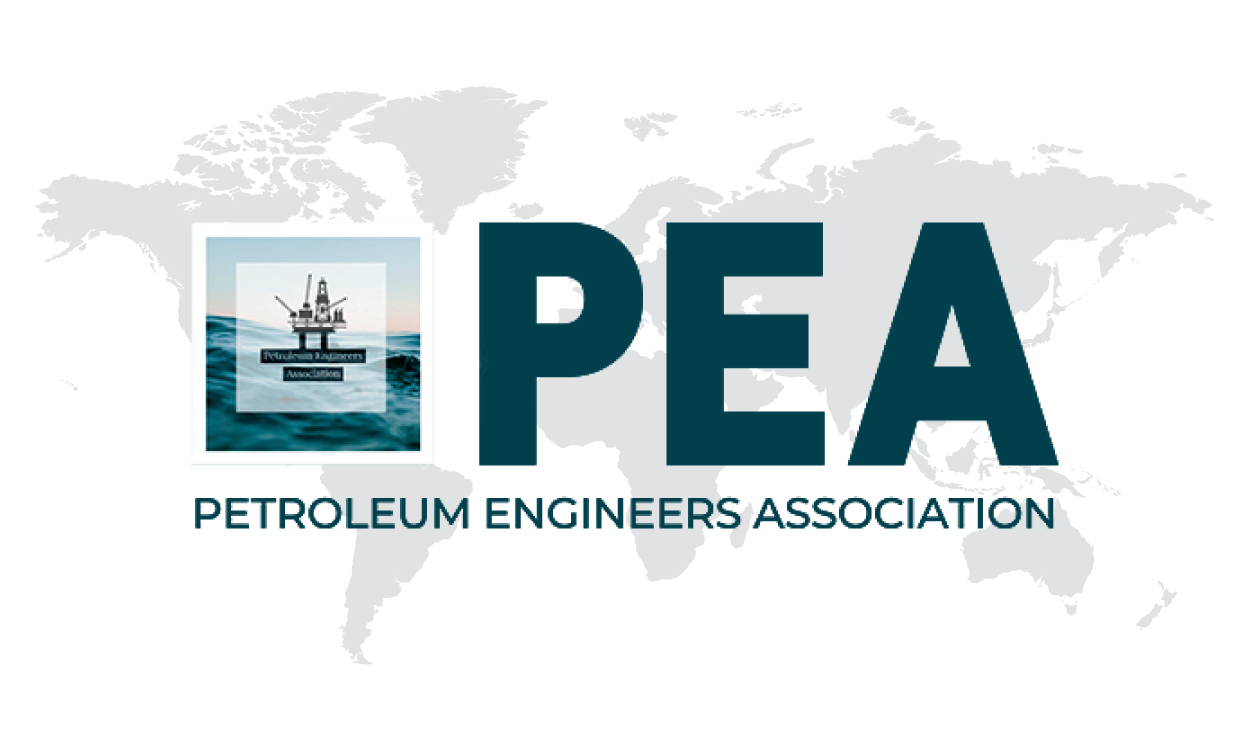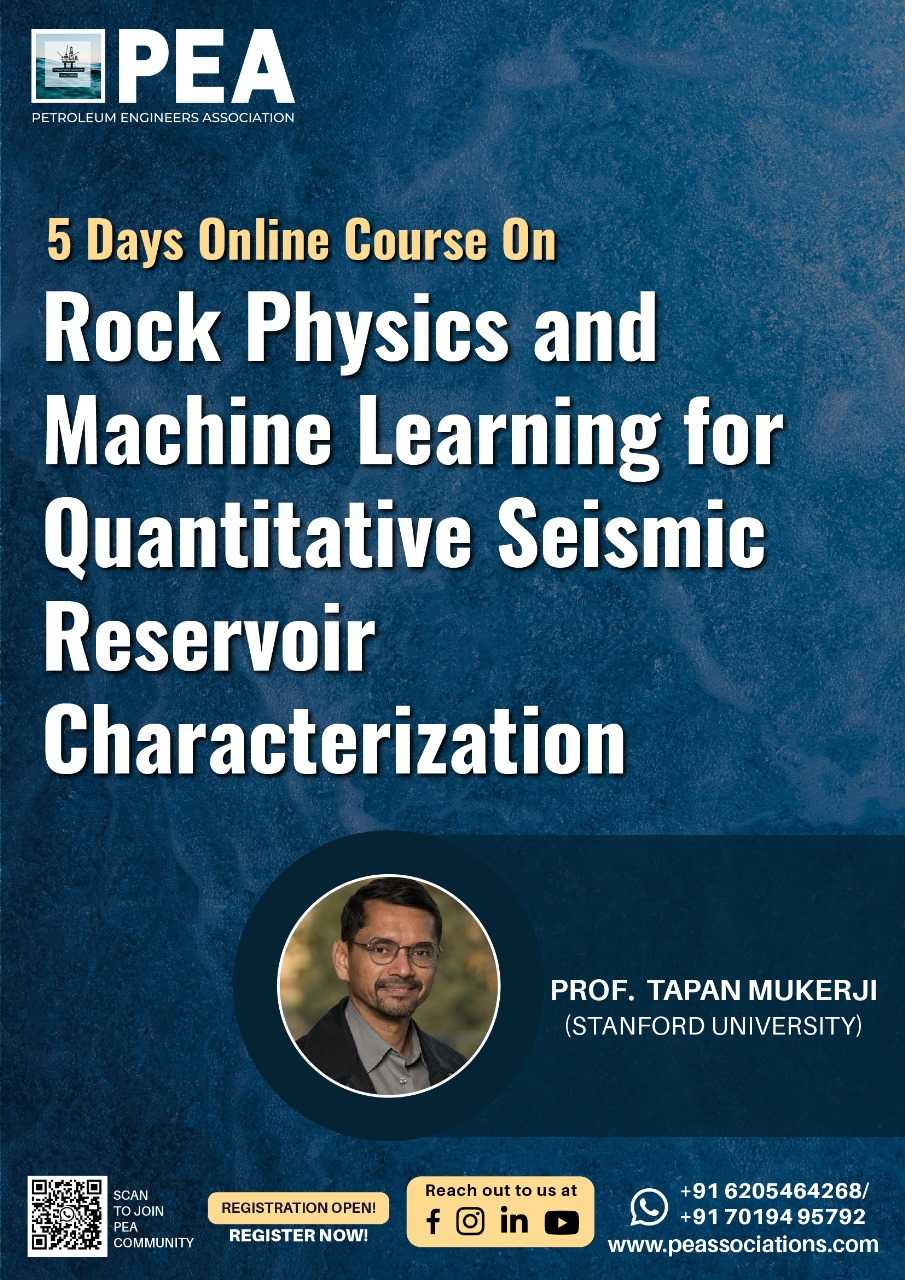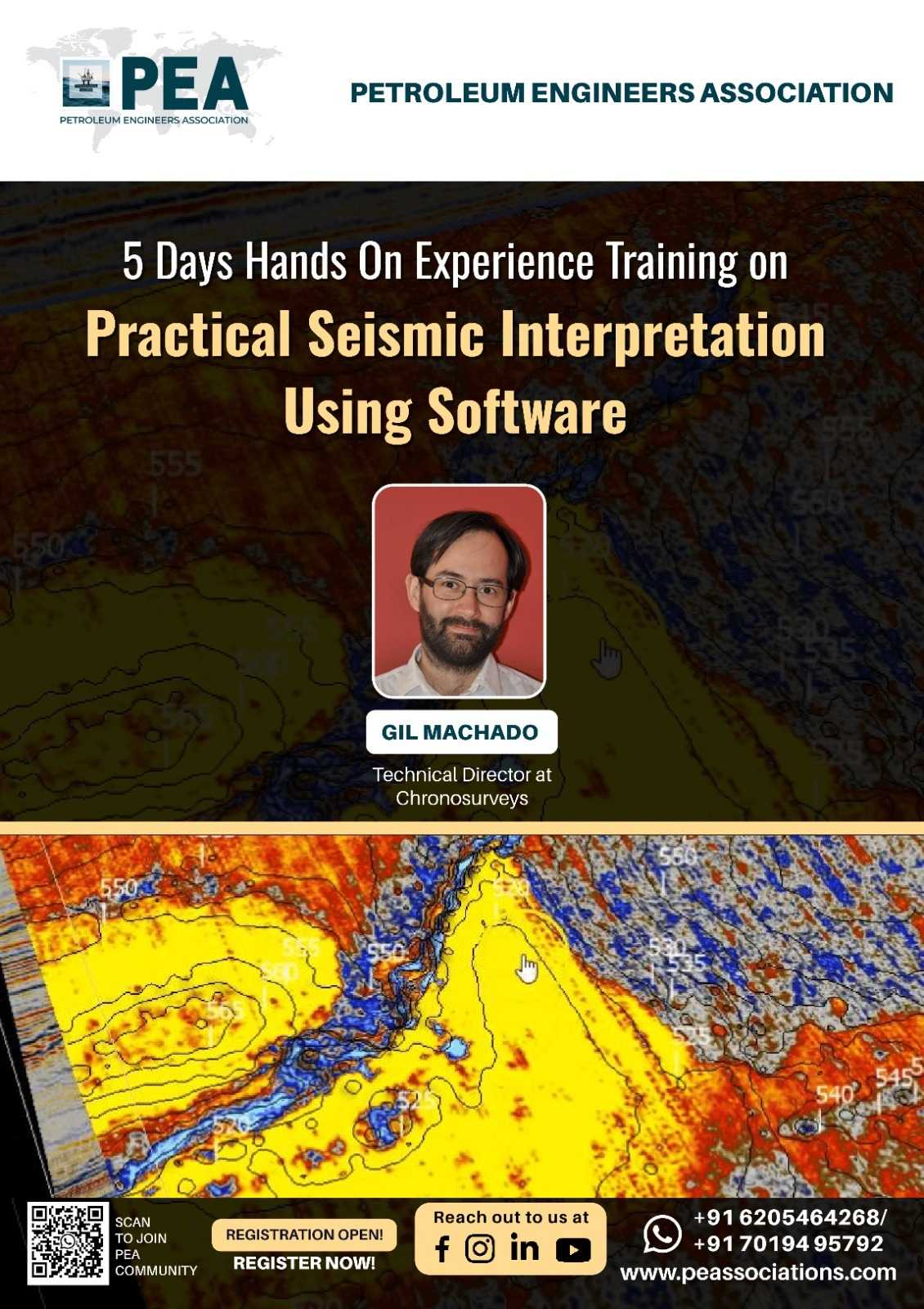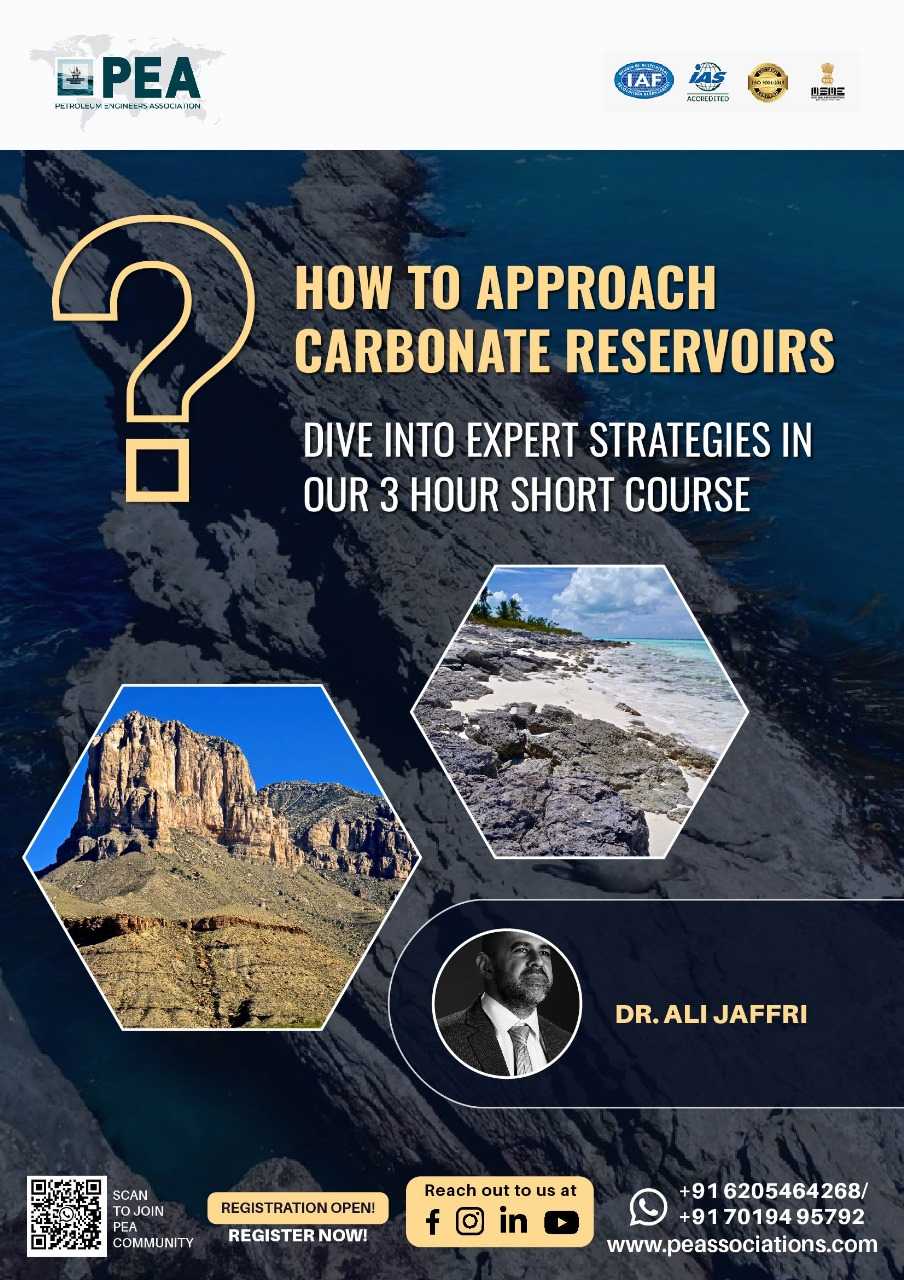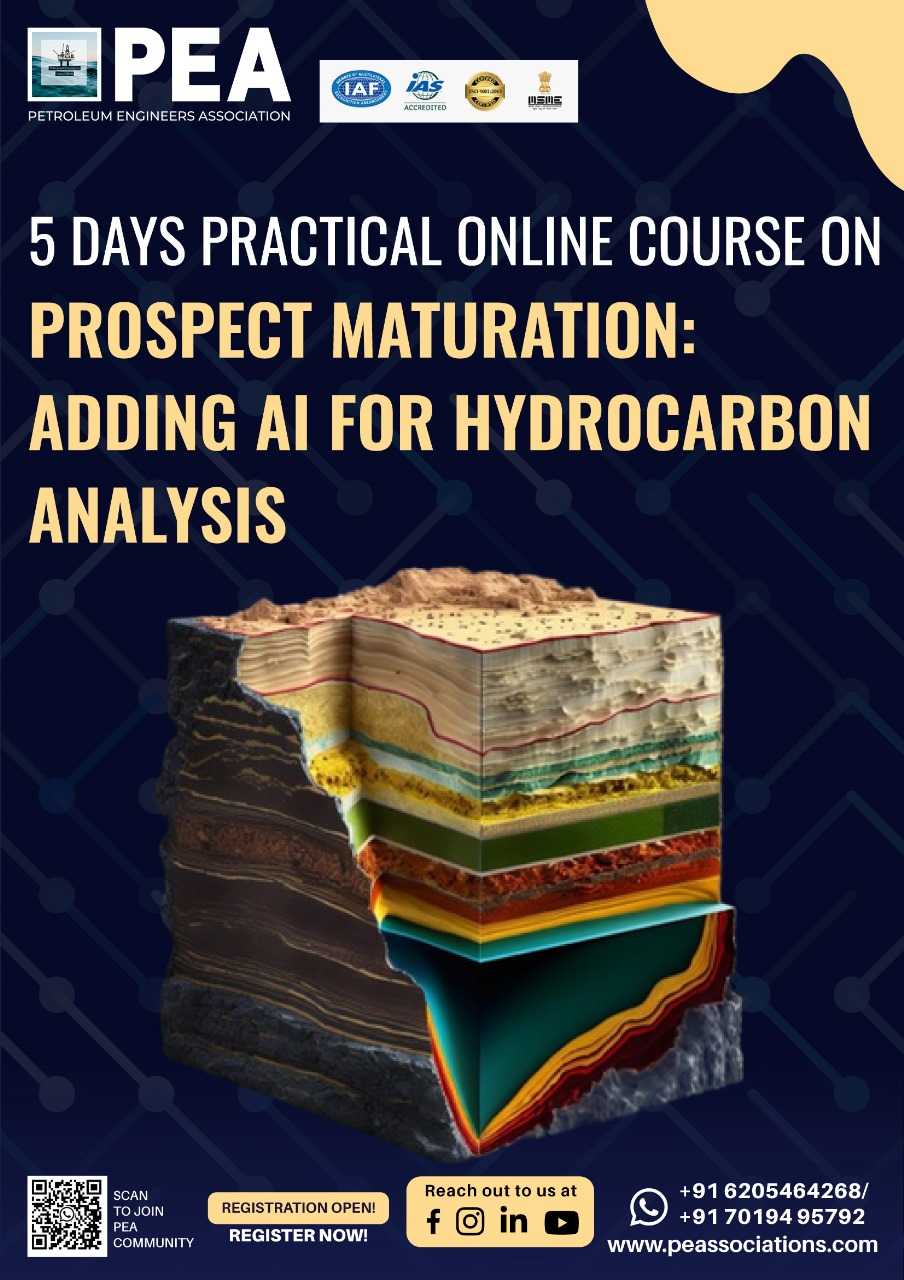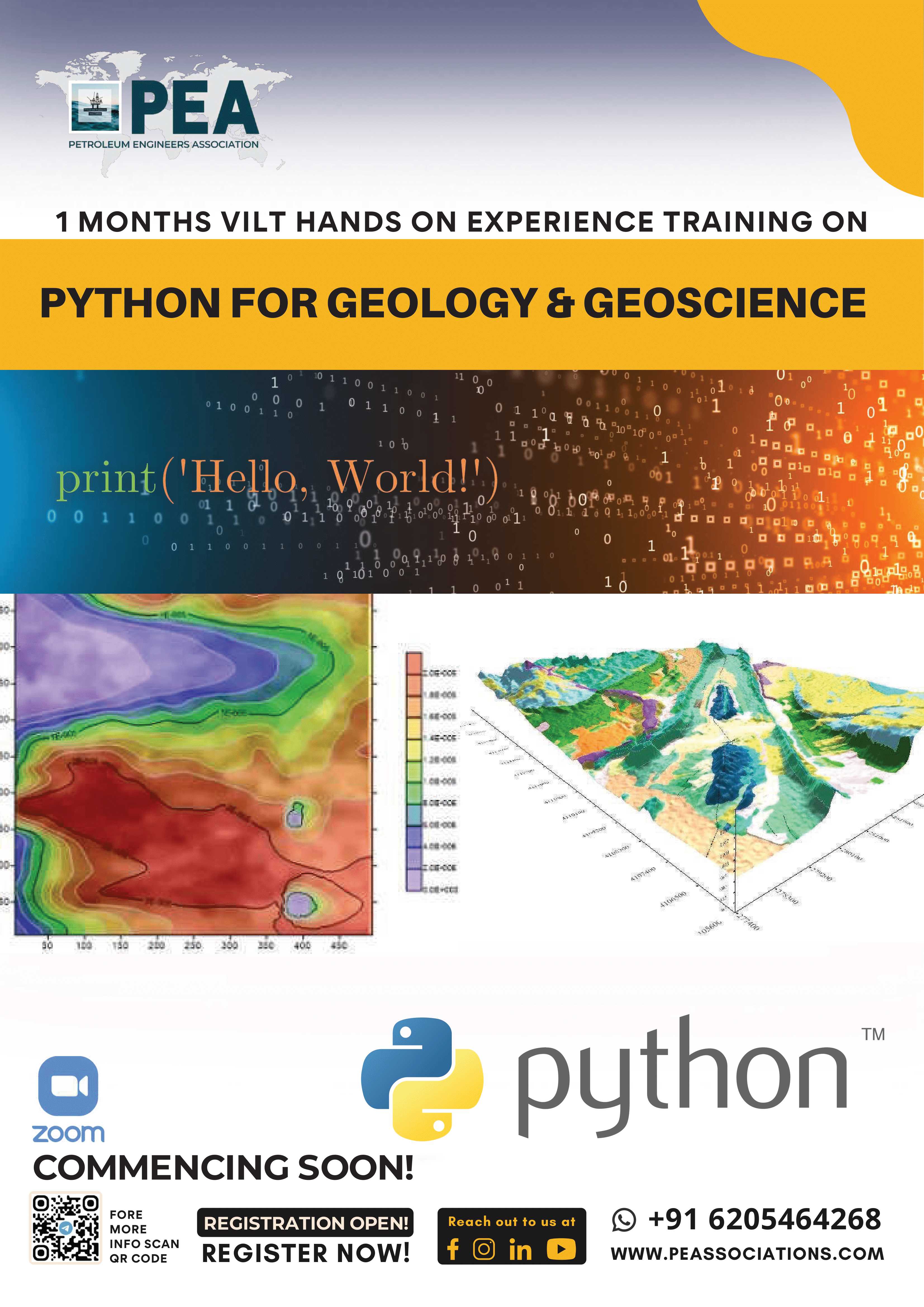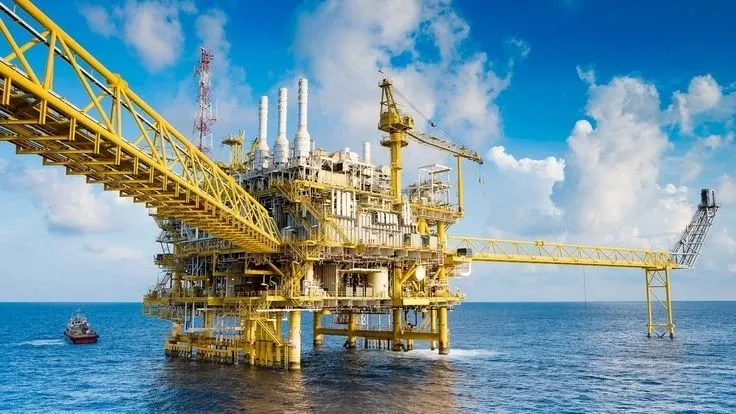| Code | Date | Time | Duration | Location | Currency | Team of 10 Per Person | Team of 7 Per Person | Early Bird Fee Per Person | Normal Fee Per Person |
|---|---|---|---|---|---|---|---|---|---|
| PEAMLSG43 | 10 - 14 Nov 2025 | 9 AM CALIFORNIA TIME |
4 Hours / Day
|
Zoom Online
|
USD
|
2150
|
2250
|
2500
|
2850
|
The Classes Will be Online Via Zoom from Mon to Fri With 4 Hours / Day.
Boost your team's skills and your budget! Enjoy group discounts for collaborative learning. Send an inquiry to info@peassociations.com.
Rock Physics and Machine Learning for Quantitative Seismic Reservoir Characterization
Description
Demo Class
The integration of rock physics and machine learning is transforming seismic reservoir characterization. By connecting rock properties to seismic data, this course empowers professionals to improve reservoir predictions, optimize recovery, and reduce uncertainties in reservoir characterization. This training offers a hands-on approach to understanding and applying these powerful tools in real-world reservoir studies, enhancing the overall effectiveness of seismic data interpretation.
Understand the fundamentals of rock physics and its application in reservoir characterization.
Learn to apply machine learning techniques to enhance seismic data interpretation.
Develop skills in integrating rock physics models with machine learning algorithms.
Improve prediction accuracy in reservoir properties using data-driven methods.
Gain practical experience in using tools and workflows for quantitative seismic reservoir characterization
This course is delivered through a blend of interactive lectures, case studies, and hands-on exercises. Participants will engage with practical examples and real-world datasets, applying rock physics and machine learning methods in structured workshops, fostering both theoretical understanding and practical skills.
By participating in this course, organizations will benefit from improved reservoir forecasting accuracy and more efficient exploration and production operations. Enhanced seismic reservoir characterization translates to better risk management and cost-effective decision-making, fostering sustainable growth and resource optimization.
Participants will gain a strong foundation in rock physics and machine learning, equipping them with the latest skills to advance in the field of seismic reservoir characterization. This knowledge will enable attendees to approach complex reservoir challenges with confidence, adding value to their roles and enhancing their career progression.
This course is ideal for geoscientists, reservoir engineers, petrophysicists, data scientists, and other professionals involved in seismic interpretation, reservoir modeling, and subsurface data analysis. It is also valuable for those looking to integrate advanced data science techniques in their reservoir studies for improved accuracy and decision-making.
Day 1
Introduction to Rock Physics, motivation, introductory examples
Parameters that influence seismic velocities - Conceptual Overview
effects of fluids, stress, pore pressure, temperature, porosity, fractures Bounding methods for robust modeling of seismic velocities
Effective media models for elastic properties of rocks
Day 2
Gassmann Fluid substitution – uses, abuses, and pitfalls
derivation, recipe and examples, useful approximations
Partial saturation and the relation of velocities to reservoir processes
The importance of saturation scales and their effect on seismic velocity
Day 3
Shaly sands and their seismic signatures
Granular media models, unconsolidated sand model, cemented sand model
Velocity dispersion and attenuation; Velocity Upscaling
Day 4
Rock Physics of AVO interpretation and Vp/Vs relations
Quantitative seismic interpretation and rock physics templates.
Rock physics for CO2 geosequestration
Example case studies using AVO and seismic impedance for quantitative reservoir characterization
Day 5
Selection of other topics including:
Fractures and anisotropy
Rock physics of organic-rich shales
Digital rock physics
Rock physics and Bayesian machine learning applications
On successful completion of this training course, PEA Certificate will be awarded to the delegates

Academic Leadership: Tapan Mukerji is a Professor (Research) and co-director at the Stanford Center for Earth Resources Forecasting, holding a Ph.D. in Geophysics from Stanford University.
Research Expertise: His research spans rock physics, geostatistics, wave propagation, and machine learning for reservoir characterization and monitoring.
Awards & Editorial Roles: Mukerji received the SEG’s Karcher Award (2000) and the ENI Award (2014) and serves as an associate editor for Geophysics and Computers and Geosciences.
Publications & Keynotes: He has co-authored influential books, including The Rock Physics Handbook, and frequently presents at international conferences and short courses on rock physics and geostatistics.

